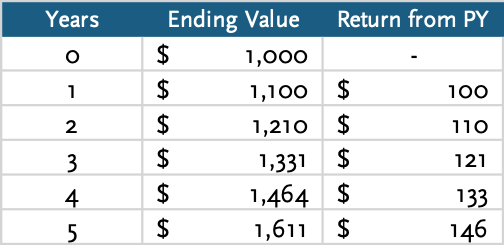
In today’s world, where information about the stock market is readily available at our fingertips, it can be easy to overlook the importance of developing good savings habits. While investment returns are a critical part of any financial plan, developing consistent savings habits is a tried-and-true way to build financial security over the long run.
The investment landscape is always going to be ever changing and as investors, to a large extent, we’re going to be susceptible to the ebbs and flows of financial markets. However, one thing that we have significantly more control over, is how much we’re able to save.
So, if you’re able to, why not automate your investment contributions to ensure you develop these habits sooner rather than later. After all, implementing these habits has never been easier. In this post, we’ll focus on the benefits of automating your investment contributions and how it can help you achieve your financial goals over the long term.
How to Automate Your Savings?
Automating your savings habits is the practice of making regular deposits into an investment portfolio, without you having to manually initiate each transaction. This can be set up through your investment advisor, via your brokerage account and can be done on a weekly, bi-weekly, monthly, or really at any frequency you choose. It is as easy as clicking a few buttons.
Why Automate Your Investments?
Once You Start It’s Unlikely You’ll Stop: The hardest part with any new habit is not getting started, but rather being consistent. Once you start an automatic savings plan, it takes minimal effort to maintain when you have the cashflow to sustain it.
Consistency is Key: Automating a savings plan helps you stick to a consistent investment strategy, even during turbulent market conditions.
Time is Money: With automated savings, you don’t have to constantly remember to make manual contributions into your investment accounts. You can use that time to do more important things and spend your time on things that matter most to you.
It Takes Emotions Out of the Equation: Automated investing takes the emotions out of the equation, helping you avoid knee-jerk reactions to market fluctuations and limits bias when investing in all types of market conditions.
It Builds Momentum: Good habits tend to build and compound off each other. In the award-winning book, The Power of Habit by Charles Duhigg (worth a read if you haven’t read it before), he discusses the concept of ‘keystone habits’. Keystone habits are habits, whether good or bad, that have ripple effects throughout your life.
Learning how to save consistently is a keystone habit that can have a positive rippling effect in your relationship with your finances. It’s why the Navy emphasizes making your bed every morning, it’s a keystone habit.
The Value of Compounding
Albert Einstein famously referred to compound interest as “the eighth wonder of the world” and Albert Einstein was, all things considered, a pretty smart guy. Compounding is one of the core principles of why we invest – it’s the concept of having your money work for you. Compounding is the process by which investors earn a return (profit) on both their original investment and on the returns (profits) they previously received. The returns compound on each other.
It works like this… imagine you invested $1,000 and earned a 10% return on your investment in the first year, the next year, and in the years after that. In the first year, your $1,000 would earn $100, but in the second year it would earn $110. That’s because in the next year, the $100 of earnings will also grow by 10% ($1100 x 10%) and this happens year after year after year.
Now, the example in the table below assumes that an investor automated their investments to save $1,000 per month over 30 years and earned a conservative 5% annual rate of return.
You can see that over time, the value of their investments grew substantially in the later years. $360,000 worth of contributions, grows to $836,726 in asset value, in which a majority of the portfolio is comprised of investment returns versus lifetime contributions. The table above shows the power of starting a good habit sooner rather than later.
As investors, it takes time and consistency to truly reap the fruits of your labor. But, if you can automate this process, it’ll take a lot of the heavy lifting off your shoulders.
So, where and how much should you save? To answer this question, it helps to have a detailed financial plan built out with your advisor. If you don’t have a plan or haven’t had reviewed yours in a while, we can help.




